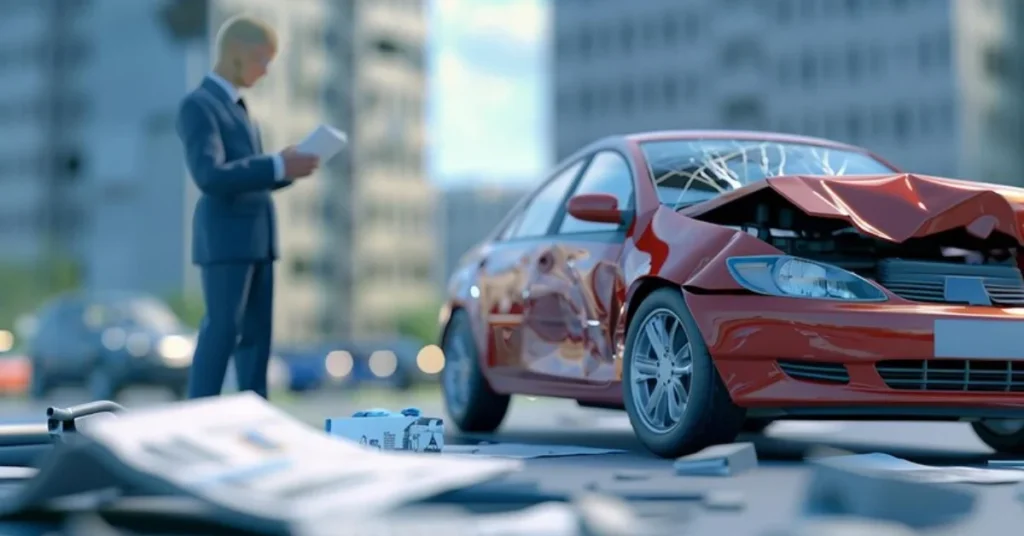Accidents can be a real pain, and knowing how they impact your insurance can feel overwhelming. When it comes to non-fault accidents—where you’re not to blame—many drivers wonder how these incidents will affect their premiums. Let’s break down what non-fault accidents are and how they can influence your insurance costs.
ALSO READ: Your Home, Our Priority: Openhouseperth.net Insurance Explained
Definition of Non-Fault Accidents
So, what exactly is a non-fault accident? Simply put, it’s an incident where you’re not at fault for the collision. For example, if another driver runs a red light and crashes into you, that’s a classic non-fault scenario. Understanding this distinction is crucial because it can greatly influence how your insurance provider treats your claim. Unlike fault accidents, where you’re considered responsible for the damage, non-fault accidents allow you to file claims without worrying about penalising your driving record.
The Insurance Claims Process
When you find yourself involved in a non-fault accident, the insurance claims process kicks in. Your insurer will assess the situation, gather necessary details, and work with the other party’s insurance if needed. This process involves examining police reports, witness statements, and any evidence like photos from the scene. While this may sound straightforward, the behind-the-scenes operations can be a bit complex. Insurance companies use this information to determine fault and ensure that all parties are treated fairly.
Impact on Insurance Premiums
Initial Reaction of Insurers
Now, let’s dive into how non-fault accidents can affect your insurance premiums. Initially, many drivers believe that a non-fault accident won’t impact their insurance costs at all. Unfortunately, this isn’t always the case. While you won’t be penalised as severely as you would for a fault accident, your insurer may still raise your premium due to the increased risk associated with your profile.
Long-Term Effects
Over time, the impact of non-fault accidents can accumulate. If you have several non-fault claims on your record, your insurer may view you as a higher risk, which could lead to increased premiums in the long run. This can feel frustrating, especially when you know you weren’t at fault.
Comparison with Fault Accidents
When you compare non-fault accidents to fault accidents, the difference becomes clearer. A fault accident usually results in a significant spike in premiums, as insurers see you as a more dangerous driver. Non-fault accidents may not lead to as drastic of an increase, but they can still have a noticeable impact on your costs, particularly if they occur frequently.
Factors That Influence Premium Changes
Frequency of Non-Fault Claims
One of the most significant factors influencing premium changes is the frequency of non-fault claims. If you’ve had multiple non-fault accidents, your insurer might question your overall driving safety. Even if you’re not at fault, a pattern of accidents can make you seem like a higher risk, potentially leading to premium increases.
Severity of Claims
The severity of the claims you file also plays a role. If a non-fault accident results in substantial damages or medical expenses, insurers will take this into account when determining future premiums. The higher the costs associated with the claim, the more likely it is to influence your premiums negatively.
Driver Profile and History
Lastly, your driver profile and history are crucial in assessing your risk level. Factors like your age, driving experience, and previous claims history can all impact how your insurer views you. A younger driver or someone with a less-than-stellar driving record may see more significant impacts on premiums than an experienced driver with a clean history.
What You Need to Know About Getting a Replacement Vehicle
You Do Not Pay
Know that a replacement vehicle can be part of your claim. Most people are reluctant to get one at first because they assume they’re going to be paying for it. However, if you’re not at fault for the accident, this becomes an expense in your claim. Therefore, if you need a car to get around, whether it’s going to work every day or to get groceries, you should go ahead and get a replacement car.
It Should Be Like-For-Like
One important thing you need to know about when you’re getting a replacement vehicle is that it needs to be like-for-like. This means that the car you hire should be exactly like the one you have. This can include the engine type and size. The idea is that you’re getting one that offers the same capabilities and functions.
Note that if you get a car that isn’t classed as a like-for-like vehicle, you will have to pay the difference in your claim. For example, if you have a small hatchback and hire a large SUV, this isn’t going to be classed as a like-for-like vehicle. Instead, you’ll only be able to claim for some of the charge and you’ll have to fund the rest.
Ask an Expert
It’s often the case that people don’t know what a like-for-like vehicle will be. Indeed, you can get worried that you’re choosing one but will have to pay for it later. The best thing you can do to avoid this situation is to ask an expert. They’ll provide you with assistance on your claim, which can include advice on what a replacement vehicle should look like. Then, you can know that the other driver will be paying for it from their insurance company.
Conclusion
Understanding how non-fault accidents affect your insurance premiums is crucial for every driver. While you may not face the same penalties as with fault accidents, non-fault claims can still have an impact on your costs over time. By being proactive—shopping around for quotes, maintaining a clean driving record, and utilising your no-claims bonus—you can better manage your insurance premiums and ensure you’re not left out of pocket.







